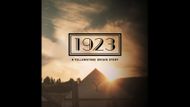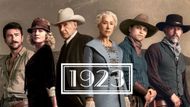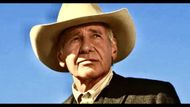With 1923, the latest chapter in the ever-expanding Yellowstone universe, audiences are once again drawn into the rugged landscapes and raw stories of America’s frontier. Along the way, names like Deadwood start to surface, names that sound almost too cinematic to be real. But here’s the truth: the Deadwood seen on HBO, and echoed in the gritty texture of 1923, isn’t just a set piece or a clever nod to the past. It’s a real place, one that lives on both as a physical town and a symbol of how wild, chaotic, and deeply human the making of America really was.

Where legend and dirt roads collide
Deadwood was born in 1876, in the shadows of the Black Hills of South Dakota, a patch of land rich in gold and controversy. The town grew quickly and illegally, springing up on sacred Lakota territory after gold was found in nearby streams. Its name came from the dead trees that loomed above the gulch, but it was the living, the miners, drifters, prostitutes, gamblers, and gunslingers, who gave the place its pulse. There were no laws here, no clear rules. Deadwood thrived on tension, deals made over whiskey, and the constant gamble of survival.
That’s the fire HBO tapped into with Deadwood, the series that ran from 2004 to 2006, ending with a long-awaited film in 2019. The show wasn’t just set in the West, it felt like it had been dug up from the very soil. Characters like Al Swearengen (played with ferocious charm by Ian McShane), Seth Bullock (the stoic lawman portrayed by Timothy Olyphant), and Calamity Jane were drawn from real history. But the show’s magic came from the way it made them feel painfully alive, full of contradictions, rage, grief, humor, and a rough-edged hope. Deadwood, on screen, was dirty, unpredictable, and unforgettable, just like the real town it was modeled after.

A town that echoes in 1923
Even though 1923 doesn’t spotlight Deadwood directly, its presence is felt. The show carries that same dust-in-the-lungs, blood-under-the-fingernails energy, the sense that every character is carrying something heavy and personal, shaped by places like Deadwood. It’s a story about a country in transition, with modernity creeping in and old ways fighting not to be erased.
1923 picks up decades after Deadwood’s wildest days, but the DNA is there: a harsh land, people fighting for their place on it, and the quiet violence of progress. The Dutton family’s struggles mirror the broader story of the West, a place where survival always came first, and justice was something you had to build with your own two hands. The sets, the costumes, the silences between characters, they all echo that same realism HBO perfected in Deadwood.
Visually, both series capture that haunting mix of beauty and brutality. Wooden buildings lean under their own weight. Streets are thick with mud, not just as texture, but as a reminder that the West was never clean or easy. And while HBO’s Deadwood was constructed on a set, the real town, yes, it’s still there, stands as a monument to what happens when stories become landmarks.

A town that refuses to fade
Drive into Deadwood today and you’re stepping into more than just a tourist destination, you’re walking through the echoes of history. With just over a thousand residents, the town now serves as both a living museum and a tribute to the chaos that once defined it. The Mount Moriah Cemetery, perched above the town, holds the remains of Wild Bill Hickok and Calamity Jane. The Bullock Hotel, founded by the real Seth Bullock, still operates, its original charm intact.
What’s remarkable about Deadwood is that it hasn’t been overly polished for modern eyes. There’s still grit in the air, still stories clinging to the saloon walls. The town doesn’t just tell one version of history, it invites you to wrestle with it. From the injustices faced by Native peoples to the untold stories of women, laborers, and immigrants, Deadwood is layered, alive, and still evolving.

Critical acclaim and cultural weight
When Deadwood first aired, it felt like HBO had taken a Western and turned it into a kind of frontier poetry, raw, foul-mouthed, deeply emotional poetry. The show won eight Emmys and a Golden Globe, but more importantly, it earned a place in television history for its ambition and depth. David Milch’s writing pushed boundaries. His characters didn’t just speak, they bled, cursed, pleaded, and broke apart in front of us.
1923, though a different kind of story, carries that same creative spirit. Its themes, displacement, survival, grief, and transformation, feel timely and timeless. It doesn’t glorify the West; it interrogates it, asking what was lost, who paid the price, and whether the cost of progress was ever really worth it.

A place both real and remembered
So yes, Deadwood is real. But it’s more than a dot on a map. It’s a ghost that lingers in our stories, a mirror for our ambition, and a monument to the messy business of becoming a nation. It’s a place built on contradictions: beauty and violence, freedom and theft, community and cruelty.
Whether you meet it in the dusty streets of 1923 or revisit it through HBO’s unforgettable series, Deadwood refuses to be forgotten. It reminds us that the stories we tell, about who we were, and who we want to be, are never simple. And maybe that’s the real legacy of the West: not the guns or the gold, but the reckoning that comes when we dig beneath the myth and find something achingly human underneath.
